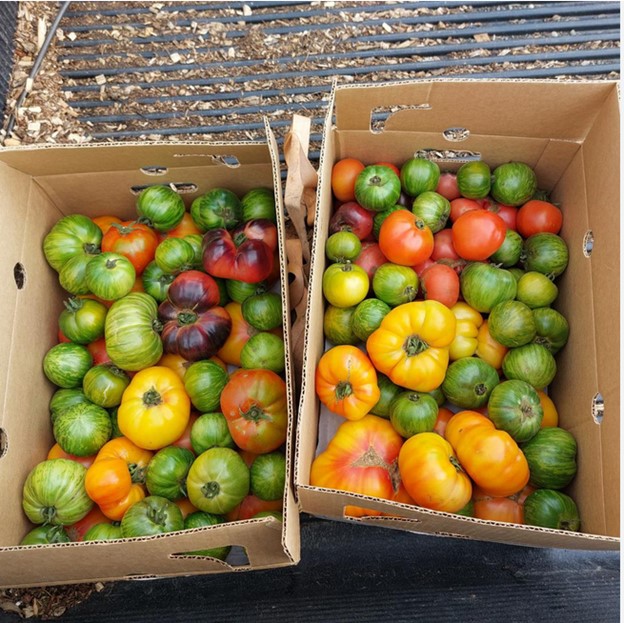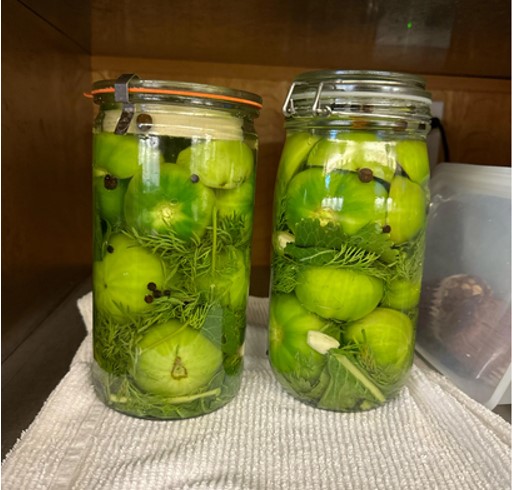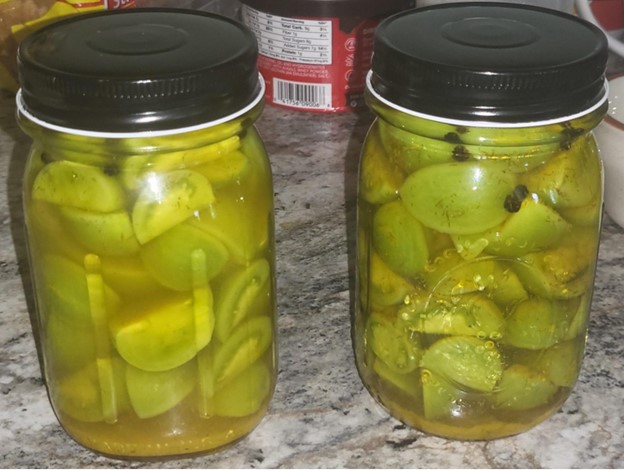Green tomatoes are a staple at the end of the growing season, especially when the first frost threatens to cut your harvest short.
Whether you’re a homesteader, gardener, or just love making fried green tomatoes, knowing how to store green tomatoes for months can help you reduce waste and enjoy your harvest long after summer ends.
Here’s everything you need to know to keep those green beauties fresh for as long as possible.
Why Store Green Tomatoes?
Table of Contents

Green tomatoes are simply unripe tomatoes picked before they fully mature. If stored properly, they will ripen slowly over time or can be kept green and used in a variety of recipes.
Storing them helps extend the shelf life of your harvest and lets you enjoy fresh tomatoes well into the winter months.
Step-by-Step Guide to Storing Green Tomatoes Long-Term
-
Choose the Right Tomatoes

Begin by selecting green tomatoes that are firm and free from blemishes, cracks, or soft spots. Harvest them before the first frost or when nighttime temperatures consistently drop below 50°F (10°C).
Opting for mature green tomatoes ensures they have the potential to ripen properly during storage.
-
Clean and Sort

Gently wipe off any dirt using a dry cloth; avoid washing them, as moisture can promote rot. Sort the tomatoes based on their ripeness:
- Fully green and hard – These will ripen slowly over time.
- Lightly blushed -These are closer to ripening and will do so more quickly.
Sorting helps manage the ripening process and allows for timely use.
Storage Methods
1. Ripening Over Time (Cool Storage Method)

If you wish to enjoy ripe tomatoes gradually over weeks or months, this method allows green tomatoes to ripen slowly in a controlled environment.
Requirements
- Cardboard boxes or shallow trays
- Newspaper or tissue paper
- A cool, dark place (55–65°F or 13–18°C)
Process
- Wrap each tomato individually in newspaper or tissue to reduce contact and moisture buildup.
- Place them in a single layer in a box or tray.
- Store in a cool, dark area like a basement, garage, or pantry.
- Check weekly, removing any that show signs of ripening or spoilage.
- Move ripening tomatoes to room temperature to finish the process.
Shelf Life – 1–3 months, depending on conditions and tomato variety.
2. Keeping Tomatoes Green (Refrigeration-Free Cold Storage)

To preserve tomatoes in their green state for extended periods, this method slows down the ripening process without refrigeration.
Requirements
- Paper bags or cardboard boxes
- A root cellar, fridge drawer (optional), or an unheated basement
Process
- Maintain a storage temperature of 50–55°F (10–13°C).
- Store tomatoes in breathable containers, avoiding sealed plastic bags.
- Ensure moderate to low humidity to prevent mold.
- Regularly inspect for signs of ripening or spoilage.
Shelf Life – 2–4 months, depending on temperature stability.
4. Freezing for Later Use

For long-term preservation, freezing is an effective method, especially if you plan to use the tomatoes in cooked dishes.
Process
- Wash and core the tomatoes.
- Decide whether to freeze them whole or chopped, based on future use.
- Place the tomatoes in airtight bags or containers.
- Label with the date and store in the freezer.
Shelf Life – 8–12 months.
What to Do with Stored Green Tomatoes

- Allow them to ripen naturally indoors.
- Prepare Southern-style fried green tomatoes.
- Pickle them for tangy snacks.
- Use in chutneys, salsas, or relishes.
- Bake into savory pies or casseroles.
- Never store tomatoes near apples or bananas—they emit ethylene gas that speeds up ripening.
- Keep an eye on them weekly—one rotten tomato can spoil the bunch.
- Experiment with varieties—some heirlooms store better than others.
Wrapping Up
With a little preparation and the right storage method, green tomatoes can last for months, providing a taste of summer even during the colder months.
Whether you prefer them ripened slowly or kept green for your favorite recipes, these techniques ensure you make the most of your harvest.
Happy storing—and even happier eating!
Leave a Reply